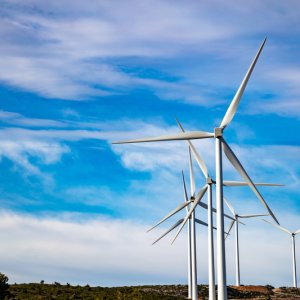
Mexico Is Likely to Fall Short of 2024 Clean Energy Goals
During 2021, experts and government institutions said that Mexico’s renewable energy transition has not been progressing fast enough. Even though the country increased this number by 2.9 percent in 2021, Mexico fell slightly short on its goal to reach a renewable energy generation level of 30 percent, as part of the administration’s wider strategy to replace fuel oil and diesel with clean energy sources.
In June 2022, the Ministry of Energy (SENER) shared in its development program PRODESEN 2022-2036, which revealed that the total electricity generation through renewable energy sources in 2021 stood at 29.5 percent, meaning there was a deficit of 0.5 percent from the original goal. Considering this underperformance, some experts believe that the goal to reach 35 percent of clean energy generation by 2024 will likely fall short, too. According to PRODESEN, SENER estimated that in view of the current conditions, the goal will likely take a year longer to achieve. Conversely, the ministry suggested that the energy capacity in 2025 will be ahead of schedule for 2030’s goals.
SENER’s main explanation for the deficit was that the COVID-19 pandemic caused an overall impasse for many industrial and technological processes, including the energy. Other factors to consider are the delay in the start date of many energy projects, both in the public and the private sector, as well as the temporary judicial suspensions of SENER’s planning instruments that the energy ministry says should have guaranteed a safe use intermittent renewable power production plants.
“At the time of establishing these goals, [SENER] did not evaluate the technical or financial viability that would have guaranteed the reliability of the National Electricity System (SEN), as the Energy Transition Law stipulates, [nor] the technological evolution of power electronics associated with photovoltaic solar and wind-powered generation centers and their effect on the strength of the SEN and on the development of the systems necessary to capture and store CO2,” reads the SENER report.
The report also alludes to difficulties that stem from financially prioritizing other economic sectors over electric power generation. The projects with the highest budgetary priority involved the expansion and modernization of the power grid, as well as thermal energy power plants that could improve the reliability and continuity of Mexico’s energy supply.
However, considering the Supreme Court’s ruling regarding the electricity industry law (LIE), SENER said it should now be possible to enhance clean energy generation at CFE’s hydroelectric, geothermal and nuclear power facilities. In the past, it was more difficult to fully utilize the energy produced at these power plants as the wholesale electricity market (WEM) favored cheaper but intermittent privately-owned energy projects.
Regarding clean electricity generation, hydroelectricity still accounts for the largest share, standing at 42 percent, more than the 26 percent of wind and 25 percent of solar capacity deliver. At the same time, fossil fuels like fuel oil, gas and diesel still take up 70.5 percent of the overall power production.
SENER stresses that the ancillary services that enable intermittent clean energy generation, especially wind and solar power are too easily forgotten, as the ministry claims these energy sources are both ineffective and unsustainable for the current SEN. President López Obrador has often criticized how state-owned electric utility CFE carries the financial burden of the backup needed to tackle intermittency, but private industry expert point toward the aging transmission distribution system and a lack of incentives for private ancillary services as the real problems.
















